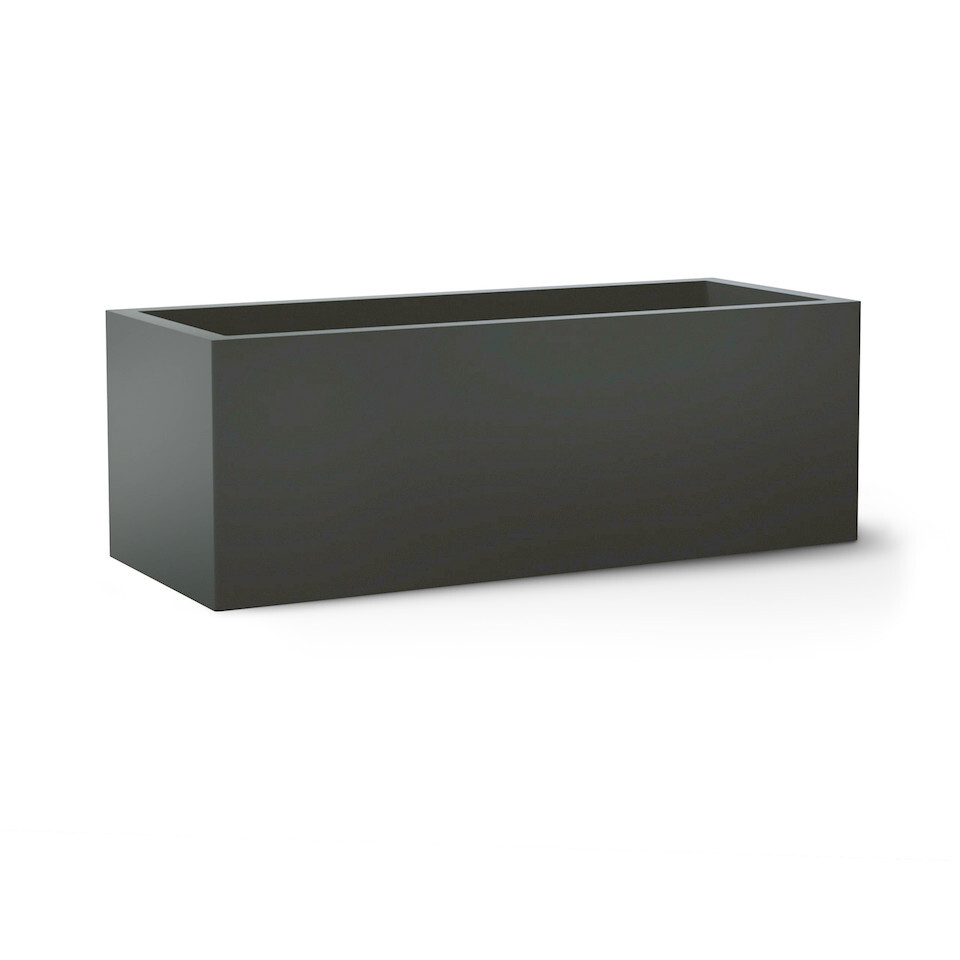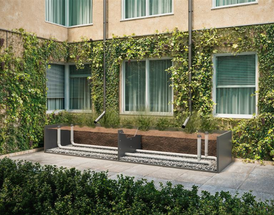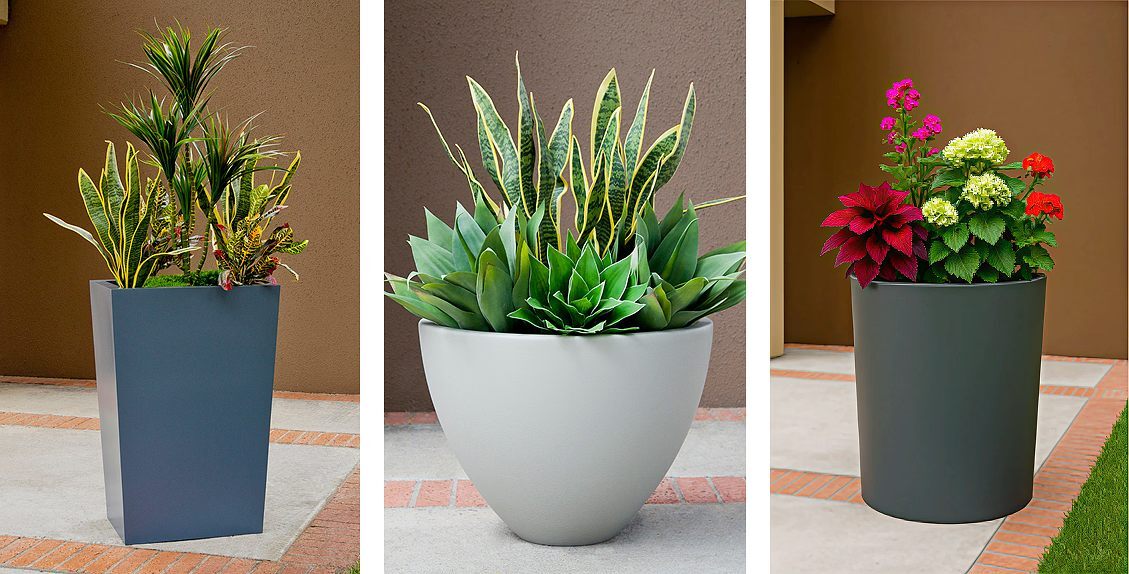Sep 10th 2025
Sustainable Stormwater Management Solutions for Urban Environments
- Urbanization disrupts natural processes that handle excess stormwater.
- Managing stormwater is crucial to control flooding, filter pollutants, replenish groundwater, and protect infrastructure.
- Innovative commercial solutions for sustainable stormwater management can help restore balance and keep urban environments safe from flooding.
As natural landscapes evolve, they develop a careful balance to help manage stormwater. Rainwater soaks into the soil, replenishing groundwater. Plants, trees, and grasses grab onto rainfall through their roots, slowing its flow. Natural reservoirs, like marshes and ponds, hold excess water, while streams and rivers carry it away to prevent sudden flooding.
Once an area is urbanized, that natural sustainability is disrupted. The solution? It’s not to pray for less rain. Instead, sustainable stormwater management must be found. Luckily, innovators like Planters Unlimited are following in nature’s footsteps and designing systems that mimic the way natural landscapes deal with floodwaters. Here’s how well-engineered planter systems can sustainably manage the perils of urban stormwater.
What Triggers Stormwater Issues?

An occasional sprinkle isn’t a problem in most urban areas. During light rainstorms, much of the precipitation that falls evaporates before it has any adverse effects. But when bigger storms come along and dump a lot of rain, that’s when a flood of water-related problems can occur. But why?
1. Impervious Surfaces
Rain – even a lot of it – seeps right into healthy soil. But it doesn’t soak into concrete, asphalt, rooftops, and other hardscapes. So instead of staying in place and soaking into the ground, it creates runoff, moving at a high speed and huge volume into a city’s drainage system. These surfaces create problems for urban stormwater management.
2. Lack of Retention
While there may be a pocket park or two dotted around a given city, there are almost never enough green spaces or retention areas to handle excess precipitation. So when more rain than usual falls, cities don’t have places to absorb the sudden influx of water.
3. Infrastructure Issues
If your city has been around for a while, the storm drains and sewers are probably at least several decades old. Often, the systems are just too old – or too poorly maintained – to handle high runoff levels.
4. Land Use
When cities are built, areas like wetlands and forests are often absorbed for the sake of urban development. Those key allies in slowing and absorbing stormwater are lost.
Construction and land grading further disrupt natural drainage patterns. And in hilly areas, as more houses and commercial buildings are added in high zones, more water is channeled to low-lying areas.
While modern urban planners attempt to address these concerns, they can’t be eliminated altogether. As well-designed as nature’s plan is for sustainable stormwater management, it isn’t foolproof. Whole river deltas can be swallowed up and lost forever when waters flow too strongly and swiftly.
5. Pollution and Sediment
When rainwater runoff flows through urban areas, it picks up oils, pesticides, and other chemicals, along with trash from streets and parking lots. This doesn’t just contaminate local waterways – it can also clog up storm drains, making the flooding worse.
Addressing the Problem
Since no one can control the rain, taking steps to minimize its impact – and maximize its benefits – is where successful sustainable stormwater management begins.
- Runoff needs to be controlled to prevent urban flooding.
- Pollutants should be filtered before they have a chance to reach bodies of water.
- Water needs to percolate into the ground to replenish aquifers.
- Urban design should be enhanced both practically and aesthetically with strategic green infrastructure.
Commercial Solutions From Planters Unlimited
While effective city planning and infrastructure overhauls are crucial for addressing stormwater issues, innovators like Planters Unlimited are coming up with sustainable stormwater management solutions that integrate seamlessly into urban environments. Our bioretention planters offer big benefits while beautifying city spaces.
Although the specific setup is customizable to a variety of spaces, the runoff management process deployed through most of Planters Unlimited’s system is simple yet smart:
- Water runs off a roof or overhang into a commercial planter.
- As it flows through the soil, the water is filtered – just like the rainwater that seeps into natural ground soil.
- Filtered water that pools at the bottom of the planter percolates into drain pipes, where it is diverted safely away from structures.
Natural Principles in Commercial Planters
The bioretention process at play in Planters Unlimited’s commercial planters follows a lot of nature’s principles in terms of the sustainable management of stormwater. The flow of rainwater is better controlled, so drainage systems aren’t suddenly overwhelmed. And water is filtered, so fewer pollutants and less sediment enter local waterways.
Customizable Options

Bioretention planter systems can be configured to suit an almost endless array of site needs, aesthetics, and budgets. As with all the products we sell, these strategically engineered planters that work great for sustainable stormwater management are constructed from durable, weather-resistant materials to ensure strength and longevity. They’re customizable in terms of both size and finish:
- Versatile fiberglass planters are available in 24 automobile-grade paint finishes.
- Fiberstone planters offer the look of natural stone without the added weight.
- Steel planters can be ordered in both a sleek powder-coated finish or with the unique patina of Corten steel.
Partner With Planters Unlimited for Effective Stormwater Management
Innovative, waterwise solutions like Planters Unlimited’s bioretention planters offer a sustainable approach to stormwater management and improving water quality, all while enhancing commercial landscapes. We are proud to be part of the solution in helping cities create safer, more resilient urban environments.


